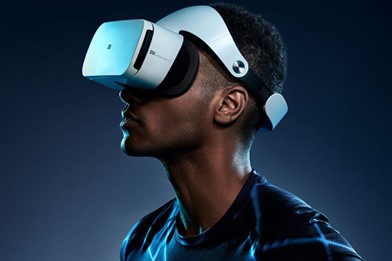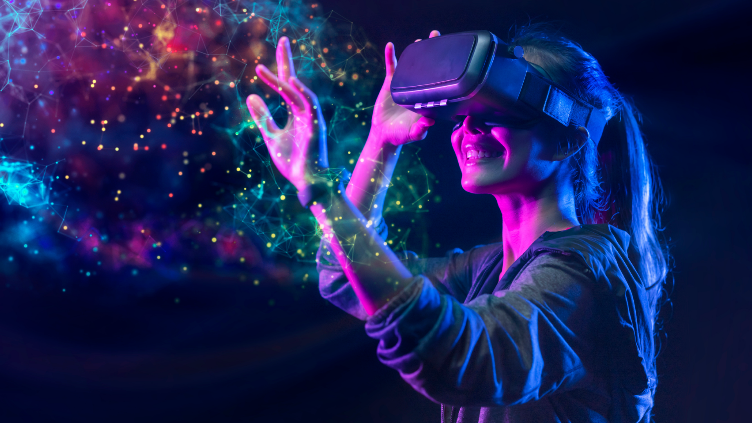Virtual reality and Augmented reality

According to research, an average American spends 7 hours and 4 minutes looking at a screen every day. For most people this is a mobile phone or a television, but what exactly is the future of this space? The Answer is virtual reality (VR), the use of computer modelling and simulation that enables a person to interact with an artificial three-dimensional (3-D) visual or another sensory environment. VR applications immerse the user in a computer-generated environment that simulates reality through the use of interactive devices, which send and receive information and are worn as goggles, headsets, gloves, or bodysuits. In a typical VR format, a user wearing a helmet with a stereoscopic screen views animated images of a simulated environment. The illusion of “being there” (telepresence) is affected by motion sensors that pick up the user’s movements and adjust the view on the screen accordingly, usually in real-time (the instant the user’s movement takes place). Thus, a user can tour a simulated suite of rooms, experiencing changing viewpoints and perspectives that are convincingly related to his head turnings and steps. Wearing data gloves equipped with force-feedback devices that provide the sensation of touch, the user can even pick up and manipulate objects that he sees in the virtual environment.
The term virtual reality was coined in 1987 by Jaron Lanier, whose research and engineering contributed many products to the nascent VR industry. A common thread linking early VR research and technology development in the United States was the role of the federal government, particularly the Department of Defense, the National Science Foundation, and the National Aeronautics and Space Administration (NASA).

Another term that you may have heard when discussing this space is AR or augmented reality, but what exactly is the difference between the two? Augmented reality (AR) augments your surroundings by adding digital elements to a live view, often by using the camera on a smartphone. Virtual reality (VR) is a completely immersive experience that replaces a real-life environment with a simulated one.
Augmented reality is the integration of digital information with the user’s environment in real-time. Unlike virtual reality, which creates an artificial environment, augmented reality uses the existing environment and overlays new information on top of it.
Boeing researcher Thomas Caudell coined the term augmented reality in 1990, to describe how the head-mounted displays that electricians used when assembling complicated wiring harnesses worked. One of the first commercial applications of AR technology was the yellow “first down” line that began appearing in televised football games sometime in 1998. Today, Google glass and heads-up displays in car windshields are perhaps the most well-known consumer AR products, but the technology is used in many industries including healthcare, public safety, gas and oil, tourism, and marketing.
Augmented reality apps are written in special 3D programs that allow the developer to tie animation or contextual digital information in the computer program to an augmented reality “marker” in the real world. When a computing device’s AR app or browser plugin receives digital information from a known marker, it begins to execute the marker’s code and layer the correct image or images.
AR applications for smartphones typically include a global positioning system (GPS) to pinpoint the user’s location and its compass to detect device orientation. Sophisticated AR programs used by the military for training may include machine vision, object recognition and gesture recognition technologies.
